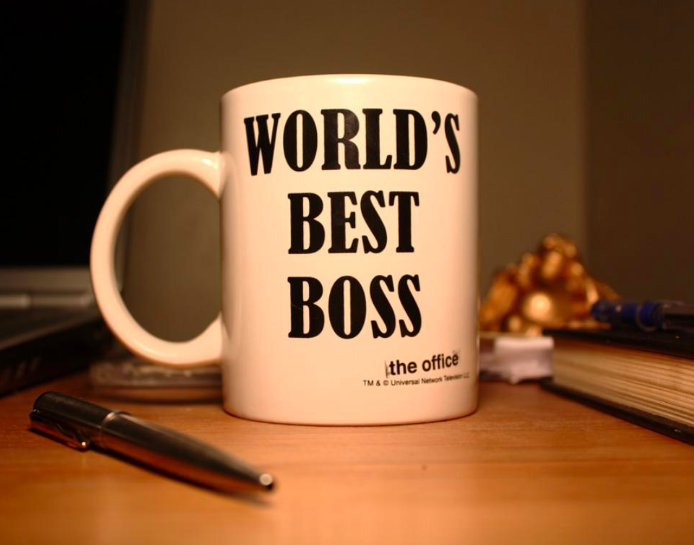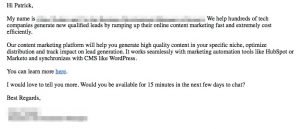— December 11, 2018
When Ben Horowitz published his thoughts on the idea that product managers are the CEO of their products in “Good Product Manager/Bad Product Manager” nearly two decades ago, the concept was profound, but divisive. Should PMs be tasked with such a heavy assignment? Does viewing oneself through this lens take a product to a new level of achievement, or does it set a product leader up for total failure?
While some may disagree with this assessment, the approach strong CEOs and strong product leaders must take in order to affect change are more parallel than they are separate. In many ways, a perfect CEO boot camp is to learn how to be an effective product manager first.
Ultimately, it all boils down to product managers owning the results of the product like a CEO owns the results of the company.
Similarities Between CEOs and Product Managers

In technology companies, product management is oftentimes the most influential area across an organization, with the least amount of direct control. Product managers bring together a large group of people from various backgrounds with even more varied goals to create and execute on the product, but typically don’t directly manage any of them. A PM’s authority tends to be narrow, and the skills it takes to manage up, across, and around hurdles in the process are in-line with the business gymnastics CEOs perform daily.
Typically, a product manager’s responsibilities include:
- Owning long-term product strategy. When it comes to market fit and long-term roadmapping, product managers lead the charge.
- Acting as the point-person for non-technical teams, prospects, focus groups, and other stakeholders. In many cases, product managers are the liaison between technical and non-technical worlds.
- Supporting the engineering build of the product, the design build of the product, and the non-technical efforts for the product (Customer Success, Marketing, Sales, etc.). Product managers help to bridge the gap between needs on both sides.
- Tracking market changes and competition to ensure market fit and product evolution are competitive. Product managers then deliver feedback based on learnings to the rest of the product stakeholders to help create awareness for product marketing.
Basically, product managers deeply interact with nearly every function within their organization, yet none of them report to them. They have to constantly ask themselves hard questions to prioritize, cut, and manage cross-department initiatives. The mental approach product managers need to take in order to succeed is more like a CEO than any other role.
Four CEO lessons to apply to product management
Many of the lessons successful CEOs live by can be applied directly to product management, mobile or otherwise. Here are four of our favorites.

1. Don’t be an expert in every area of business, but have a strong understanding of everything
In order to make informed decisions, a good product leader needs to at least have a general understanding of every domain across their company. What are the goals of individual teams? Where are their progress blockers? What motivates them to speed up their ability to deliver good work, and what deflates them enough to slow down? Once a product leader considers these questions from other teams’ vantage points, they’ll have better inputs when it comes to weighing the facts that drive crucial product decisions.
As it is untenable for a CEO to perform every aspect of work within their company well, the same is true for product leaders. But to empathize with team members, prioritize product decisions effectively, and steer the product in the right direction, a basic understanding of all areas is necessary.
2. Use a level head when making critical investment decisions
Once difficult decisions are made, it’s the CEO’s job to ensure the company focuses its resources on the right activities. The same goes for the product.
Removing roadblocks so employees can work effectively is a difficult task, but it’s ultimately up to the product leader to say “no” to projects that stray from bigger decisions that have been made. Prioritizing effectively can make or break a product’s success, and it’s easy to get distracted by shiny objects—a prime environment for forgetting about the ultimate product goal. Effective product leaders who use a level head when evaluating new tasks are able to see the proverbial “forest from the trees” when making tough decisions around where to spend their time.
3. Create the vision for your product—and for your company
A CEO’s number one job is to rally their employees around the company’s central vision, and to share just enough information for them to “see the future” but not to overwhelm them with details. The same is true for an effective product leader.
Product managers must be able to distill the product’s vision clearly, and effectively communicate it to the rest of the company so everyone is on the same page. At the same time, they must take care to not overwhelm teammates with too much information, or the enthusiasm behind the product’s vision and strategy may fall to the wayside.
4. You’re only as good as your team
Like any CEO, a good product leader is only as good as their team. Where this gets tricky for product in a way it doesn’t for CEOs is that although a product manager may do none of the hiring, they’ll probably do all of the teaching.
As a product leader, make sure you set your team up for success from the get-go as much as possible. That means setting up effective collaboration tools, openly communicating about prioritization (especially when there are changes), and keeping your team up-to-date on long term company and product vision. The more you can enable your teammates to succeed, the more success you’ll have yourself.
Looking ahead
Reshaping the way you think about your role can be challenging, but there are more similarities between running a company and managing a product than some may think. Product managers can adopt and leverage tactics CEOs lean on to improve their workflows, priorities, and team education on the product.
Business & Finance Articles on Business 2 Community
(37)







